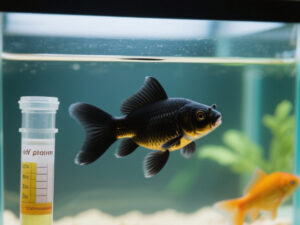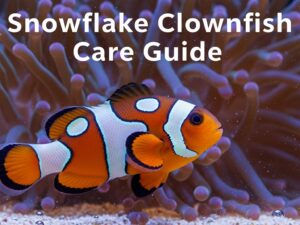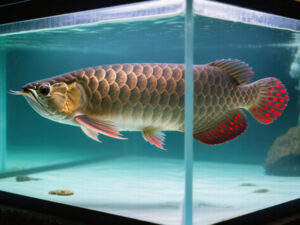Yellow bass often swim in the shadows of their more famous cousins, yet these spirited fighters deserve a spot on every angler's target list. If you've ever confused a yellow bass with a white bass at the boat ramp, you're not alone – but you're about to become an expert at telling them apart.
Yellow bass (Morone mississippiensis) are compact temperate bass distinguished by their broken lateral stripes and yellowish coloration, primarily inhabiting the Mississippi River basin and select waterways across the central United States. These schooling fish rarely exceed one pound but compensate with aggressive strikes and surprising fight on light tackle.
This comprehensive guide delivers everything from foolproof identification tips to proven fishing techniques that work year-round. Whether you're a seasoned angler or just starting to do it by yourself, you'll discover the seasonal patterns, best lures, and secret spots where yellow bass thrive.
What Are Yellow Bass? Understanding the Basics
Yellow bass belong to the temperate bass family, sharing lineage with the popular white bass and striped bass. Despite their smaller size, these fish play a significant role in freshwater ecosystems across North America.
Scientific Classification and Names
The scientific name Morone mississippiensis tells the story of this fish's origins. "Mississippiensis" refers to the Mississippi River system where the species was first scientifically described. While "yellow bass" remains the most common name, regional anglers may call them "stripers" or "barfish."
The genus Morone includes all temperate bass species native to North America. This classification helps explain why yellow bass share certain characteristics with their larger relatives while maintaining distinct features.
Quick Identification Guide
Identifying yellow bass becomes simple when you know what to look for. These fish typically measure 10-14 inches and weigh around half a pound, making them noticeably smaller than most white bass you'll encounter.
The most reliable identification feature is the broken stripe pattern on their lower sides. Unlike white bass with continuous stripes, yellow bass display interrupted lines below their lateral line, especially near the anal fin.
Body coloration ranges from golden-yellow to brass on the sides, fading to white on the belly. The yellowish tinge becomes more pronounced during spawning season, making identification even easier for anglers who do it by yourself.
Yellow Bass Identification: Never Confuse Them Again
Mastering yellow bass identification prevents confusion at the cleaning table and helps you target the right species. Understanding their unique features ensures you'll never mistake them for their relatives again.
Physical Characteristics
Yellow bass possess a deep, laterally compressed body that's proportionally taller than white bass. Their dorsal fins connect slightly, unlike the completely separate fins of white bass. The mouth extends to about the middle of the eye, smaller than a white bass's mouth.
The most distinctive feature remains those broken horizontal stripes. While the upper 3-4 stripes run continuously along the body, the lower stripes break into segments or offset patterns. This characteristic alone can confirm your identification.
Scale coloration provides another clue. Yellow bass scales often display a brassy or golden sheen, particularly evident in direct sunlight. The fins may show yellow or orange tinting, especially during breeding season.
Yellow Bass vs White Bass vs Striped Bass
| Feature | Yellow Bass | White Bass | Striped Bass |
|---|---|---|---|
| Average Size | 0.5-1 lb | 1-2 lbs | 5-20 lbs |
| Stripes | Broken below lateral line | All continuous | All continuous |
| Tongue | No tooth patch | Has tooth patch | Has tooth patch |
| Max Length | 18 inches | 17 inches | 50+ inches |
| Body Depth | Deep, compressed | Moderate | Elongated |
| Dorsal Fins | Slightly connected | Clearly separated | Clearly separated |
Juvenile vs Adult Yellow Bass
Young yellow bass start life looking quite different from adults. Juveniles display less pronounced striping and a more silvery appearance. As they grow, the characteristic broken stripes develop more clearly.
Adult yellow bass develop deeper bodies and more vibrant coloration with age. Males often show brighter yellows during spawning season, while females tend toward a more subdued brass coloration. By their second year, most yellow bass display full adult characteristics.
Yellow Bass Habitat and Distribution
Understanding where yellow bass live helps you locate them consistently. These adaptable fish thrive in specific environments that smart anglers learn to recognize.
Native Range and Current Distribution
Yellow bass originally inhabited the Mississippi River drainage from Minnesota to Louisiana. Today, they've expanded through both natural migration and human introduction. Texas populations stretch from the Red River to the San Jacinto drainage.
Eastern populations exist in Alabama's Mobile Bay drainage and Tennessee River systems. Western introductions have established populations as far as Arizona. The Iowa Department of Natural Resources reports thriving populations in several northern lakes.
Northern range limits generally follow areas where water temperatures support year-round survival. Southern populations often grow larger due to extended growing seasons and abundant forage.
Preferred Water Conditions
Yellow bass show remarkable adaptability but perform best in specific conditions. They prefer clear to slightly turbid water with temperatures between 60-80°F. Unlike some cold water fish, yellow bass need warmer temperatures for optimal activity.
Vegetation plays a crucial role in yellow bass habitat selection. They gravitate toward areas with moderate weed growth that provides cover without restricting movement. Submerged grass beds, lily pad edges, and sparse cattails create ideal hunting grounds.
Dissolved oxygen levels above 5 ppm support healthy yellow bass populations. They avoid stagnant areas, preferring locations with subtle current or wind-driven water movement that maintains oxygen levels.
Seasonal Movement Patterns
Spring triggers upstream migrations as yellow bass seek spawning grounds. They move from main lake basins into tributaries, following rising water temperatures. Post-spawn fish gradually return to deeper summer haunts.
Summer finds yellow bass in 10-20 foot depths over mud flats. They relate to bottom structure but cruise open water while following baitfish schools. Morning and evening movements toward shallower feeding areas create predictable patterns.
Fall transition periods see yellow bass following baitfish migrations back toward shallow water. As temperatures drop, they form tighter schools and feed aggressively to build winter reserves. Winter patterns depend on latitude, with northern fish going dormant while southern populations remain somewhat active.
Yellow Bass Life Cycle and Behavior
Yellow bass behavior patterns directly influence fishing success. Understanding their life cycle helps predict where and when to find active fish throughout the year.
Spawning and Reproduction
Yellow bass spawn when water temperatures reach 60-65°F, typically in May across most of their range. Males arrive first at spawning sites, establishing territories over firm bottoms of rock, gravel, or sand in 2-3 feet of water.
Spawning occurs in groups, with multiple males attending each female. Females lie on their sides near the bottom, releasing eggs while males fertilize from above. A single female may produce thousands of tiny, semi-buoyant eggs.
Eggs hatch in 4-6 days at optimal temperatures. Newly hatched fry immediately form schools for protection, a behavior that continues throughout their lives. No parental care occurs after spawning.
Growth and Development
Yellow bass growth rates vary by location and food availability. Northern populations grow slower due to shorter growing seasons, while southern fish may reach adult size in two years.
| Age | Average Length | Average Weight |
|---|---|---|
| 1 year | 4 inches | 0.1 lbs |
| 2 years | 7 inches | 0.3 lbs |
| 3 years | 9 inches | 0.5 lbs |
| 4 years | 10 inches | 0.7 lbs |
| 5+ years | 11-12 inches | 0.8-1.0 lbs |
Sexual maturity occurs at age 2-3 for most populations. Growth slows significantly after maturity as energy shifts toward reproduction rather than body size increase.
Schooling Behavior and Feeding Patterns
Yellow bass maintain tight schools throughout their lives, a trait that benefits anglers who do it by yourself. Finding one fish almost guarantees finding more. Schools segregate by size, with similar-aged fish grouping together.
Feeding occurs primarily during low-light periods. Dawn and dusk see increased activity as schools move shallow to hunt. They feed mid-water or near bottom, targeting aquatic insects, small crustaceans, and baitfish.
Adult yellow bass prey heavily on small shad, minnows, and young-of-year fish. They also consume aquatic invertebrates, particularly chironomid larvae (bloodworms) found in soft bottom areas. This diverse diet contributes to their widespread success.
How to Catch Yellow Bass: Complete Fishing Guide
Success with yellow bass requires adapting your approach to match their preferences. These scrappy fish respond well to various techniques when properly executed.
Best Tackle and Equipment
Light tackle maximizes yellow bass fishing enjoyment. An ultralight to light-action spinning rod between 5-6 feet pairs perfectly with their fighting ability. Shorter rods provide better control when fishing from small boats or tight quarters.
Spinning reels in the 1000-2000 size range balance well with appropriate rods. Smooth drag systems prevent hook pulls on light line. Choose reels with good line capacity since yellow bass often make surprising runs.
Four to six-pound monofilament or fluorocarbon line handles most situations. Lighter line improves lure action and casting distance with small baits. Clear or low-visibility green colors work best in the clear waters yellow bass prefer.
Top Lures and Baits for Yellow Bass
Small lures match yellow bass feeding preferences perfectly. Success comes from downsizing your offerings to match their smaller mouths and prey items.
Top 10 Proven Yellow Bass Lures:
- 1/16 oz white/chartreuse tube jigs
- 1/32 oz marabou jigs in black or yellow
- Size 0 inline spinners (silver blade)
- 2-inch curly tail grubs (white, yellow, or chartreuse)
- Small floating/diving crankbaits (shad patterns)
- 1/64 oz ice fishing jigs tipped with waxworms
- Beetle Spins with 1-inch grubs
- Small jigging spoons (1/8 oz silver)
- Tiny swimbaits (1.5-2 inches)
- Road runner style jigs with spinner blades
Live bait produces consistent results throughout the season. Small minnows, often sold as "crappie minnows," work excellently in spring. During summer, nightcrawler pieces outperform other offerings. Cut bait from caught yellow bass attracts larger specimens.
Fishing Techniques That Work
Bottom presentation remains the most productive yellow bass technique. These fish feed heavily on benthic organisms, making bottom-bouncing presentations deadly effective. Drag small jigs slowly across mud flats where bloodworms thrive.
Vertical jigging excels when fish suspend over deep structure. Drop small spoons or jigs to the fish's level, then work them with short, sharp lifts. Watch your electronics carefully to stay with moving schools.
When yellow bass chase baitfish near the surface, cast small spinners or swimbaits past breaking fish. Retrieve quickly to trigger reaction strikes. This exciting topwater action typically occurs during low-light periods when baitfish feel vulnerable.
Seasonal Yellow Bass Fishing Strategies
Each season demands different approaches for consistent yellow bass success. Understanding these patterns helps you adapt your techniques throughout the year.
Spring Spawn Fishing
Pre-spawn yellow bass stage near spawning areas as water temperatures climb through the 50s. Target tributary mouths and channels leading to spawning flats. Small jigs worked slowly along bottom transitions produce well.
During active spawning, look for fish in 2-3 feet of water over firm bottoms. Approach spawning areas quietly to avoid spooking fish. Light line and small offerings prevent disturbing spawning activity unnecessarily.
Post-spawn presents excellent opportunities as hungry fish feed aggressively. Work deeper edges adjacent to spawning areas. Females recover in slightly deeper water while males often remain shallow longer.
Summer Deep-Water Tactics
Summer yellow bass relate to deep mud flats where bloodworms thrive. Use your electronics to locate schools suspending over soft-bottom areas in 15-20 feet. Mark waypoints when you find fish for future trips.
Slow trolling with small spinners helps locate scattered schools. Once found, anchor carefully upwind and work the area thoroughly. Yellow bass often hold in specific depth zones, so pay attention to successful presentations.
Night fishing improves during hot weather. Yellow bass move shallower after dark to feed on emerging insects and small baitfish. Fish floating plants edges with small jigs under slip bobbers.
Fall and Winter Patterns
Fall transition triggers aggressive feeding as yellow bass sense approaching winter. Follow shad schools moving shallow during autumn turnover. Schools become more concentrated, creating fast action when located.
Cooling water temperatures slow fish metabolism but don't eliminate feeding. Downsize offerings and slow presentations to match lethargic fish. Subtle movements often trigger strikes when aggressive retrieves fail.
Southern anglers enjoy continued action through winter. Northern populations become dormant but can still be caught through ice. Small ice fishing jigs tipped with larvae work when you do it by yourself through the hard water.
Yellow Bass as Table Fare
Many anglers overlook yellow bass as table fare, missing out on excellent eating. These fish rival any panfish for flavor when properly prepared.
Cleaning and Preparation
Filleting yellow bass requires sharp knives due to their small size. Make your initial cut behind the gills, angling toward the head. Follow the backbone carefully to maximize meat yield from these compact fish.
Remove the dark red lateral line meat for better flavor. This bloodline can impart strong flavors if left on fillets. Scale fish instead of filleting when they're particularly small to retain more meat.
Bleeding fish immediately after catching improves meat quality. Quick processing and proper icing maintains freshness. Many anglers prefer cleaning yellow bass streamside to ensure peak freshness.
Popular Cooking Methods
Yellow bass's mild, flaky white meat adapts to various cooking methods. Pan-frying remains the most popular preparation, creating golden, crispy fillets that rival any freshwater flounder.
Baking whole scaled fish preserves moisture and simplifies preparation. Season cavity with butter, lemon, and herbs before wrapping in foil. The bones lift away easily from cooked meat.
Classic Southern Yellow Bass Fry Recipe:
- Soak fillets in buttermilk for 30 minutes
- Coat with seasoned cornmeal/flour mixture
- Fry in 350°F oil until golden brown
- Serve with hush puppies and coleslaw
Pro Tips for Yellow Bass Success
Experienced anglers develop tricks that consistently produce yellow bass. These proven strategies help you catch more fish, especially when you do it by yourself.
Finding schools quickly: Start searching over mud flats adjacent to creek channels. Yellow bass use channels as highways between feeding areas. Mark schools on GPS for return visits.
Reading water conditions: Slightly stained water often produces better than crystal-clear conditions. Yellow bass feel more secure with some color, feeding more aggressively. Wind-blown points concentrate baitfish and attract schools.
Common mistakes to avoid: Using tackle that's too heavy ranks as the biggest error. Yellow bass have excellent eyesight and shy from thick lines. Fishing too fast also reduces success since yellow bass often need time to commit.
Record-catching strategies: Target pre-spawn females for the largest yellow bass. These egg-laden fish reach maximum annual weight just before spawning. The IGFA world record came from Indiana's Morse Reservoir during this period.
Yellow Bass Fishing Regulations and Conservation
Responsible angling ensures future yellow bass populations remain healthy. Understanding regulations and conservation helps preserve this valuable resource.
State-by-State Overview
Most states classify yellow bass as non-game fish with liberal regulations. Texas and several other states impose no bag or size limits. However, some states with smaller populations maintain protective regulations.
Always check current regulations before fishing new waters. States occasionally adjust rules based on population assessments. Special regulations may apply to specific water bodies supporting unique populations.
Conservation-minded anglers practice selective harvest regardless of regulations. Keeping smaller fish for the table while releasing larger spawners maintains population balance. This approach ensures sustainable fishing for future generations.
Catch and Release Best Practices
Proper handling keeps released yellow bass healthy. Wet hands before touching fish to protect their slime coat. Support the body horizontally to prevent internal injury, especially with larger specimens.
Remove hooks quickly using appropriate tools. Barbless hooks or crimped barbs speed release and reduce injury. Deep-hooked fish survive better when the hook is cut rather than forcefully removed.
Hot weather demands extra care. Limit fight time and air exposure during summer. Consider fishing deeper, cooler water during extreme temperatures to reduce stress on released fish.
Frequently Asked Questions
What's the Best Time of Day to Catch Yellow Bass?
Early morning and late evening produce the most consistent action. Yellow bass feed actively during low-light periods when prey becomes vulnerable. Overcast days extend productive fishing throughout daylight hours.
Can You Eat Yellow Bass?
Yes, yellow bass provide excellent table fare with mild, white, flaky meat. Many anglers prefer them over larger bottom feeder fishes due to their clean taste and firm texture.
What Size Hook for Yellow Bass?
Size 6 to 8 hooks work best for most yellow bass fishing. Aberdeen-style hooks allow easy removal and match well with small baits. Slightly larger hooks help when using nightcrawlers or cut bait.
Do Yellow Bass Fight Hard?
Despite their small size, yellow bass fight aggressively on appropriate tackle. They make strong initial runs and display surprising stamina. Light tackle amplifies their fighting ability for maximum enjoyment.
Where Can I Find Yellow Bass Near Me?
Check your state wildlife agency's fish species database for specific locations. Focus on river systems connected to the Mississippi River drainage. Many reservoirs and lakes contain overlooked yellow bass populations worth exploring.
Conclusion
Yellow bass deserve more attention from freshwater anglers seeking consistent action and excellent table fare. Their distinctive broken stripes, golden coloration, and absence of tongue teeth make identification straightforward once you know the key features.
Success comes from understanding their seasonal patterns and preference for small offerings. Whether you target spawning fish in shallow tributaries or probe deep summer schools, the techniques covered here will increase your catch rates. Light tackle, appropriate lures, and proper presentation unlock consistent yellow bass action.
Get out and explore waters in your area for these underrated gamefish. Their aggressive nature, schooling behavior, and willingness to bite make them perfect targets for anglers learning to do it by yourself. The next time you're on the water, don't overlook the mighty yellow bass.



